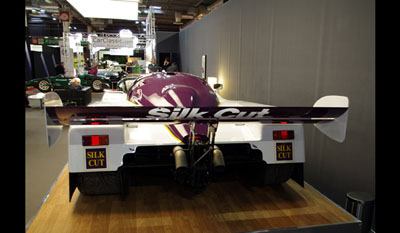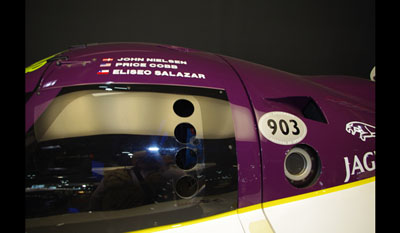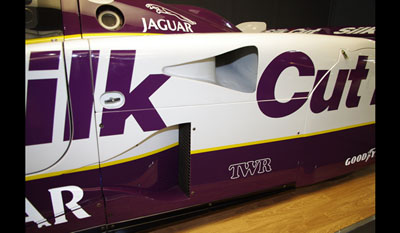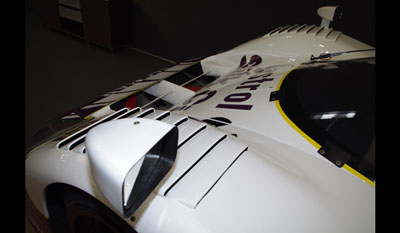Jaguar XJR-6 to XJR-12 1985 1990
In autumn 1984, Tom Walkinshaw invited the specialist Tony Southgate to design the Jaguar XJR-6 racing car for the World Championship motor racing season. The Jaguar XJR-6 had its chassis made entirely in carbon-fibre and Kevlar materials. It was propelled by a 60-degree-V-12 engine. The main feature of the body developed in wind tunnel was an exceptional down-force generated by tall venture on either side of the engine bay. The bodywork included ‘spats’ covering the rear wheels to reduce the escape of air and to maximise the ventury effect. The rear bodywork was cut off sharply behind the rear wheels and the rear spoiler was set lower than regulations allowed. The main down-force was coming from the under-body design. The V12 was claimed to develop 630 hp and was soon replaced by a 7 litre capacity version with some 720 hp. Weight was gradually reduced to 860 kg. The Jaguar XJr-6 entered the racing circuits in August 1985 at Mosport, Canada. It collected its first win at the 1986 1000 km of Silverstone with Warwick and Cheever at the wheel. The Jaguar XJR-8 was prepared for the 1987 season with more than sixty modifications over the previous model. Now with 8 wins over the season, the Jaguar XJR-8 won the World Championship but still missed a win at Le Mans. The XJR-9 was ready for the 1988 season and this time collected Daytona 24 Hours win and Le Mans 24 Hours win together with the World Championship. The Jaguar XJR-9 had been prepared for both the World Championship as well as for North American IMSA series. For the IMSA, the V12 capacity had to be dropped to 6 Litre and the power output was 620 hp rather than 720 hp for the 7 Litre. The XJR-10 (for IMSA) and the XJR-11 (for WSC) were prepared 1989 season with a turbocharged 3.5 Litre V6 replacing the V12. The Jaguar XJR-12 was ready for the 1990 season with naturally aspirated V12 while the XJR-11 was entered with de-tuned 3.5 Litre V6 according to new regulations. In 1990, the Jaguar collected both Daytona 24 Hours and Le Mans 24 Hours win and finished the Championship in second position behind Sauber Mercedes.
The car exhibited at 2013 Retromobile by Hall & Hall is chassis N°1090 1990 Jaguar XJR-12; originally built as an XJR-9 Chassis N°288 it debuted at Donnington Park in September 1987. After a long and successful career mainly in the U.S. it was converted to the Silk Cut XJR-12 to compete at Le Mans. It is the only sports car to have won both Daytona (1988) and Le Mans (1990). Wallpapers - Jaguar XJR-6 to XJR-12 1985 1990
Related review inside Autoconept-reviews.com :
|
||||||||||||||||||||||||
|---|---|---|---|---|---|---|---|---|---|---|---|---|---|---|---|---|---|---|---|---|---|---|---|---|























